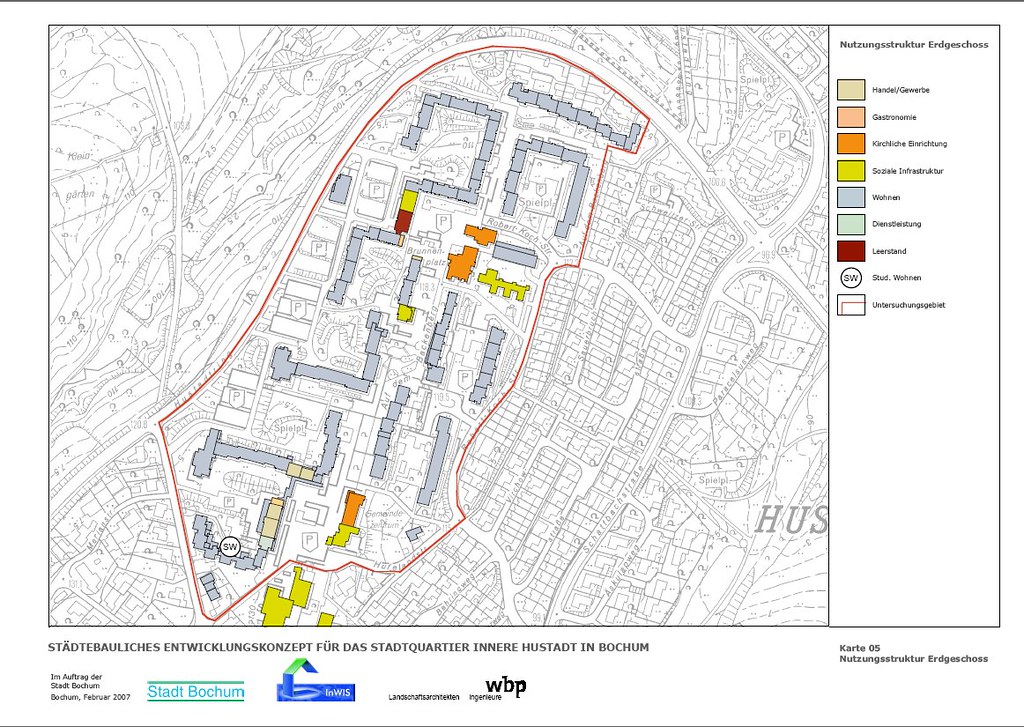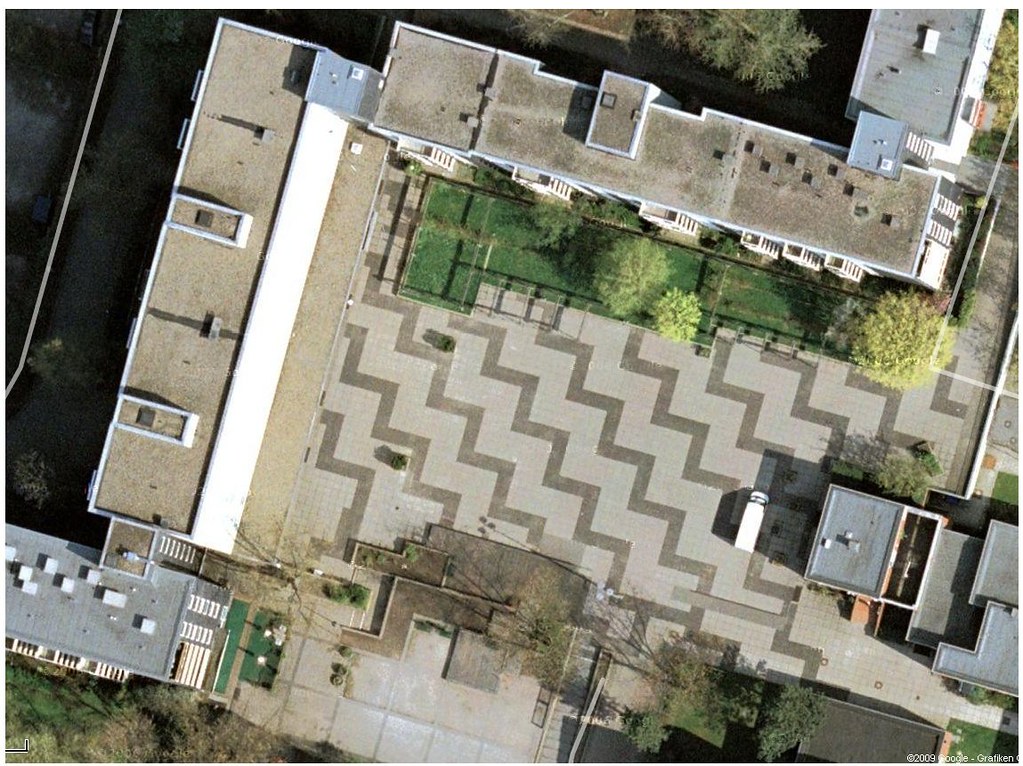The Hustadt was planned for approximately 6.000 inhabitants. Initially, they were either academic professionals from the University, or employees of the automobile company Opel. The place was meant to be a so called Universitätsrahmenstadt - a dwelling area to frame the campus of the Bochum University - with the purpose to offer professors, students, academic and public employees close living possibilities. The high buildings on the hill were meant for blue and white-collar workers, while the bungalows down in the valley were built for academic employees. The idea was to combine different social levels in one dwelling space. It was a very pedagogic project under a strong social democratic ideology.
However, the place has changed. The Hustadt is today home of people from many different countries, most of them young families, or students.


Querenburg / Hustadt und Ruhr-Universität Bochum

